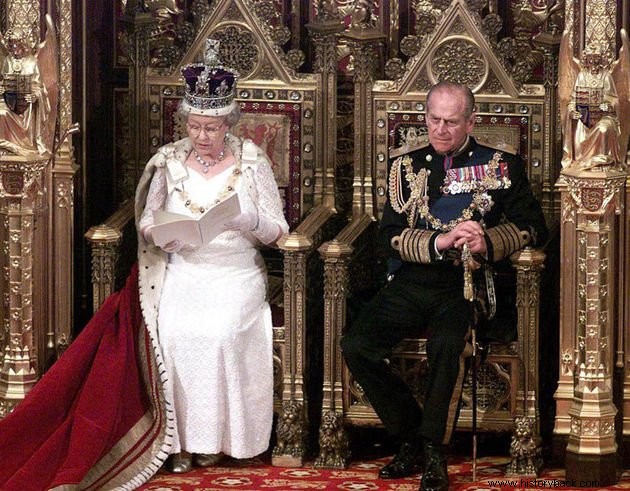The Constitutional Monarchy or Parliamentary Monarchy, is a form of government in which the king is the Head of State either hereditary or electively, but his powers are limited by the constitution.
While in the absolutist monarchy the king was not accountable to parliament, in the constitutional monarchy the king is the head of state, but his functions are described in the Constitution.
In turn, the prime minister is responsible for heading the government, also according to the constitution.
Constitutional Monarchic Countries
- Antigua and Barbuda, Andorra, Australia
- Bahamas, Bahrain, Barbados, Belgium, Belize, Bhutan
- Cambodia, Canada
- Denmark
- United Arab Emirates, Spain
- Grenade
- Solomon Islands
- Jamaica, Japan, Jordan
- Kuwait
- Liechtenstein, Luxembourg
- Malaysia, Morocco, Monaco
- Norway, New Zealand
- Netherlands, Papua New Guinea
- United Kingdom
- Saint Lucia, Saint Kitts and Nevis, Saint Vincent and the Grenadines, Sweden
- Thailand, Tonga, Tuvalu
Abstract
According to Montesquieu (1689-1755), the separation of the three powers - Executive, Legislative and Judiciary - was an important mechanism to avoid the abuse of power in a monarchical regime. Through this idea, the foundations of constitutionalism emerge.
The philosopher did not agree with the absolutism of the monarchy. In his work "The Spirit of the Laws" (1748), he criticizes this form of government and defends the separation of powers:
In addition to Montesquieu, other Enlightenment philosophers were references for the creation of constitutional monarchy, such as John Locke (1632-1704) and Jean-Jacques Rousseau (1712-1778).
The discontent with the absolutist monarchy propelled the origin of a government whose power of the monarchs would be limited.
See also:Enlightenment philosophersExamples of Constitutional Monarchy
With the growth of the bourgeoisie and the bourgeois revolutions, the power of the monarch was limited. Thus, several countries continued to have a sovereign as Head of State, but for practical matters, the administration was left to the Prime Minister.
Let's look at some examples:
France
France was the country where the bourgeois revolutions and their ideas radiated throughout Europe, through the events of the French Revolution.
The end of the absolutist monarchy took place in the first phase of the French Revolution, when in 1791 the National Constituent Assembly was enacted within the revolutionary process.
For a short time, King Louis XVI (1754-1793) was a parliamentary monarch. However, his interventions were not heard and he preferred to flee Paris, drawing the ire of the revolutionaries who ended up murdering him.
Later, when the monarchy was restored in France, the sovereigns respected this change. The country continued to be a parliamentary monarchy until King Napoleon III was defeated in the Franco-Prussian War.
See also:French Revolution (1789)England

The change was influenced by England in 1688, when the end of English absolutism gave rise to the English constitutional monarchy.
However, it was not until the 19th century, during the reign of Queen Victoria, that the foundations were laid for the British monarchy, as we know it today.
Currently, the sovereign's role lies in mediating the government's crises and must not express his views in public.
See also:UKSpain
The first attempt at a constitutional monarchy in Spain took place in 1812, during the time of the Napoleonic invasions.
However, when King Ferdinand VII (1784-1833) returns from exile, he rejects Magna Carta. Only his daughter and heiress, Isabel II (1830-1904), will reign again with a Constitution.
Currently, the Spanish monarchy is organized through the Constitution of 1978.
See also:SpainPortugal

In Portugal, the constitutional monarchy was established in 1820, with the approval of the first Portuguese constitution, after the Liberal Revolution of 1820, in Porto.
Portuguese kings still had great influence in parliament due to their moderating power, but they could not enact laws without parliamentary approval.
The Portuguese constitutional monarchy lasted from 1820 to 1910, when the republican coup overthrew the monarchy and took King Manuel II into exile.
See also:Liberal Revolution of PortoBrazil
The Brazilian constitutional monarchy began in 1822 and ended in 1889 with the republican coup.
One of the characteristics of the Magna Carta in Brazil was the existence of four powers:executive, legislative, judicial and moderator.
The Moderating Power allowed the king to appoint the ministers of state and dissolve the assembly of deputies, among other attributions.
See also:Constitution of 1824Japan
In Japan, the establishment of the constitutional monarchy took place in the Meji Era, between 1868 and 1912. The Constitution of 1890 endowed the Emperor with great political power, but this should be shared with the people, through parliament.
After the Japanese defeat in World War II, this Magna Carta was replaced by another, enacted in 1947.
In this way, the Emperor's powers became only symbolic and the monarch was considered the symbol of unity of the Japanese people.
Italy
In Italy, this government began at the end of the unification of the kingdoms that formed the peninsula, in 1871.
King Victor Manuel II (1820-1878), of the Kingdom of Sardinia and one of the leaders of the unification, ruled from the constitution that already existed in his domains since 1848.
See also:Italian unificationRead more :
- Absolute State
- Parliamentarism
- Forms of Government
- Scandinavia
